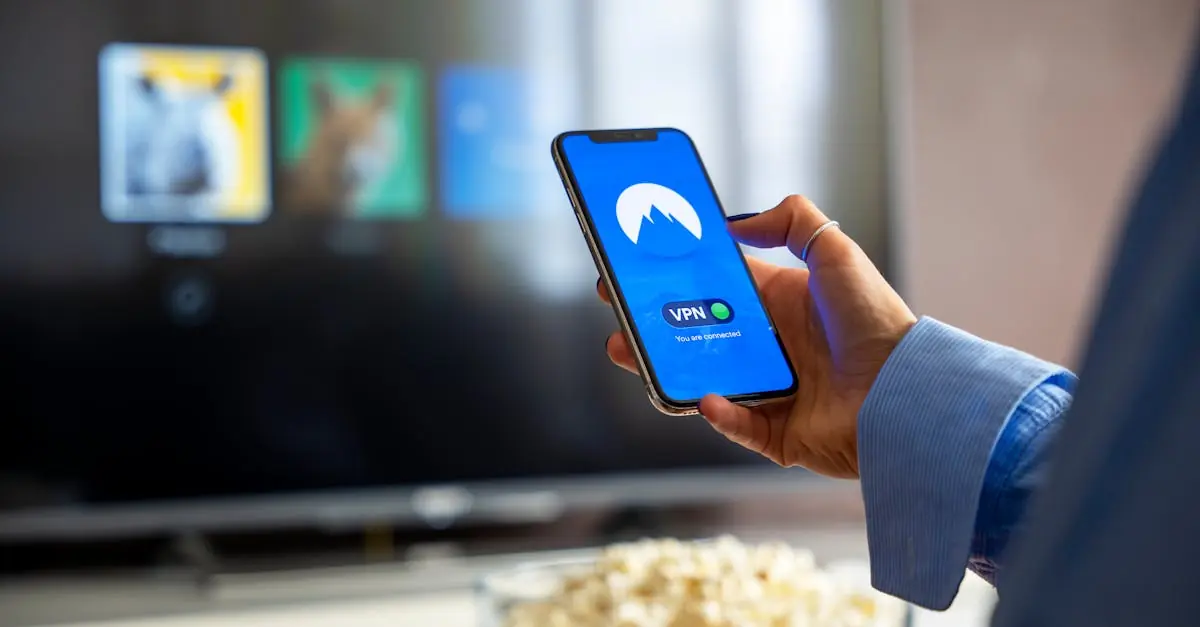Table of Contents
ToggleEver wondered what your IP address is while scrolling through cat memes on your iPhone? You’re not alone! Knowing your IP address can feel like unlocking a secret door to the digital world. Whether you’re troubleshooting a connection issue or just curious about your online identity, understanding your IP is key.
But don’t worry, it’s not as complicated as deciphering hieroglyphics. With just a few taps, you can unveil this mysterious number and impress your friends with your tech-savvy knowledge. So grab your iPhone, and let’s dive into the simple steps to find out what your IP address is. After all, who knew being an IP detective could be this much fun?
What Is My IP On My Phone iPhone?
Finding the IP address on an iPhone involves a few simple steps. First, open the Settings app. Next, tap on Wi-Fi to view available networks.
The current network connects users to the internet. Locate the active Wi-Fi connection and tap the info icon (the small “i” within a circle) next to it. This action reveals several details about the connection.
Under the IP Address section, two types of addresses may appear: IPv4 and IPv6. IPv4 is the most common format used for most devices.
Users might notice that the IP address appears as a series of numbers, such as 192.168.1.1. If using a cellular network, the process differs slightly. Go to Settings, then select Cellular or Mobile Data.
Tapping on Cellular Data Options provides additional information, including the IP address. Understanding this information aids in troubleshooting connectivity issues or managing online privacy.
It’s important for users to keep in mind that public IP addresses can change periodically. The changes depend on various factors like the Internet Service Provider.
Overall, discovering the IP address on an iPhone is a useful skill. Users can gain insights into their internet connection and optimize their online experience.
Why Knowing Your IP Address Is Important
Understanding your IP address carries several benefits, especially for iPhone users. It aids in troubleshooting network issues, enhancing security, and managing online visibility.
Understanding IP Addresses
IP addresses serve as unique identifiers for devices on a network. Each address connects a device to the internet, facilitating communication between networks. Identifying an IP address helps users understand their online presence. These addresses can reveal the geographic location of the device, which is crucial for location-specific services.
Types of IP Addresses
Two main types of IP addresses exist: IPv4 and IPv6. IPv4 consists of four sets of numbers separated by periods, such as 192.168.1.1. It’s the most common format. Conversely, IPv6 uses a longer alphanumeric string, designed to accommodate more devices. Both types play vital roles in directing internet traffic. Knowing which type your device uses enhances understanding of your network configuration.
How to Find Your IP Address on iPhone
Finding your IP address on an iPhone is quick and easy, whether using Wi-Fi or cellular settings.
Using Wi-Fi Settings
To find the IP address via Wi-Fi settings, first, open the Settings app. Next, tap on Wi-Fi and select the network connected to your device. Here, the device shows details about the connection, including both IPv4 and IPv6 addresses. Look for the IP Address section, where you’ll see the IPv4 format as four sets of numbers separated by periods. If IPv6 is needed, it appears as a longer alphanumeric string. This method works for devices connected to Wi-Fi, making troubleshooting and network management straightforward.
Using Cellular Settings
Finding your IP address through cellular settings is another option. Begin by opening the Settings app, then selecting Cellular or Mobile Data. Next, tap on the Cellular Data Options. Here, users can access information about their connection, including the IP address. Typically, the IP address for cellular data might vary frequently as it can change based on the network provider. By knowing your IP address during these instances, users can enhance connectivity understanding and privacy measures.
Troubleshooting Common IP Address Issues
Issues with your IP address can disrupt internet connectivity. Identifying and solving these problems ensures a smoother online experience.
Unable to Access IP Address
Sometimes, users may find they cannot access their IP address on their iPhone. First, they should confirm they are connected to a network. Checking Wi-Fi or cellular connections is essential, as a lack of connectivity prevents access to IP details. Users must navigate to Settings, then tap on Wi-Fi or Cellular Data, depending on their connection. If the IP address still doesn’t appear, restarting the device often resolves temporary glitches. Updating iOS might also fix bugs affecting IP address visibility. Lastly, reaching out to the network provider can clarify any network-related issues causing the problem.
IP Address Not Updating
Users often encounter situations where their IP address does not update as expected. Investigating the connection type provides clarity. For instance, Wi-Fi connections may assign static IP addresses, while cellular data typically offers dynamic ones. Users should turn off and on their Wi-Fi or cellular data to prompt an IP refresh. Additionally, forgetting the network and then reconnecting can facilitate updates under certain circumstances. If changes still don’t occur, troubleshooting the router or modem might help. Contacting the Internet Service Provider can also shed light on IP address assignment practices.
Knowing your IP address on an iPhone is more than just a technical detail; it’s a useful skill that can enhance your online experience. Whether troubleshooting connectivity issues or managing your online privacy understanding your IP can make a significant difference.
By following the straightforward steps outlined in the article users can easily access their IP address and gain insights into their network configuration. This knowledge not only aids in resolving common issues but also empowers users to take control of their online presence. Embracing this information can lead to a more secure and efficient internet experience.




